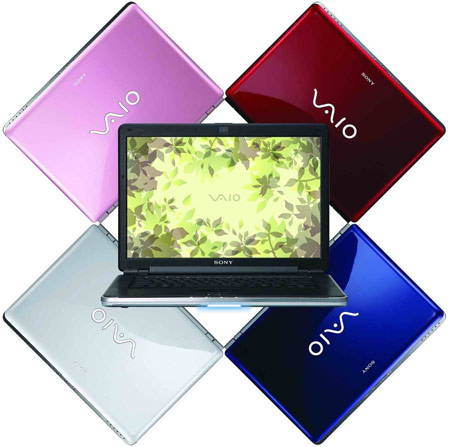When Sony launched its Vaio brand in the late 1990’s there was excitement in the air of the tech industry. There was no Apple dominance or design at the time and there weren’t many big players in the laptop market yet. This meant that Sony was able to leverage its brand name, quality, and design to come out with some beautiful units. Even as late as 2005, Sony laptops have been thinner then others, with better screens, battery life and quality than the comparable HP or Toshiba computers. On top of that, Sony always had design on their side as they made sure they were more elegant, catchy and edgy than their competition. However, starting as recently as the early 2000’s, their growth in the computer market began to change. The Vaio Desktops all but disappeared (now, there exists only one series of touchscreen, all-in-one desktops that I will soon write about). This has left them with their laptops.
First, we have to recognize that this isn’t a bad thing. The downfall of desktops has been a tech industry trend as laptops get more portable, affordable and powerful. As a society, we no longer want to be attached to one room with our computers. We can therefore forgive Sony’s fall in desktop production, albeit unplanned on their end. This brings us back to the laptop, the growth sector. Anybody who has used an HP laptop in the past knows how unreliable they were and how lacking they were in any form of design. Those who have used Toshiba laptops are all well aware of the design factor and how clunky those units were. Yet in the opposite world, Sony would provide design and form factor. As laptops got cheaper, it seemed like Sony did not want to recognize this change in the market. People began seeing a big price difference and no longer wished to pay a premium price for the Sony laptops. But as the prices of laptops continued to fall, the other players began to step up to the plate as well. HP began to offer more designs and flair to their units to attract new and younger buyers at a much lower price while Sony still offered only premium units. While there is a market for premium units, when 90% of the company’s laptops are catered to that ever-shrinking market, we can easily see the decline of Sony’s market share in the laptop category. The other 10% of laptops Sony offered seemed like stepchild laptops. They had no real design or grace; they were just cheaper and slower while HP, Dell and Toshiba offered faster, more attractive designs with better prices.
Now comes news that Sony is looking to provide more affordable Vaio laptops. According to the recent announcement from Sony Vaio’s Business Group, Vaio Laptops will have two divisions; the “division one” laptops which will be designed and manufactured by Sony, and the “division two” laptops which will be designed and manufactured by the third-parties and yet bear the same VAIO name. Of course, the minute I hear that, I think of products produced in China and worry about quality control, something that Sony and the Vaio brand prides itself on. Sony has gone on record and stated that “The quality criteria itself is no different between division number one and division number two.” Instead, the difference will be in the technology. “We will include new technology [such as the latest processors] in division number one first, and then we can learn and we can get the know-how, then we can transfer [the technology] to the products coming from division two.”
Although at first glance it might be easy to bash Sony over this, this might just be what Sony needs to reenter the growing market. We all saw how Sony entered the netbook market with the Vaio P and although it is a fantastic unit, $900 is not what a netbook is worth. That market is looking for a $300-$500 unit. Plus, the PC segment in sad truth at many times is not a market that is looking for extremely high quality products, as many consumers are more price aware. This isn’t to say there isn’t a premium market for PC laptops and that there isn’t a community of PC users who want/use better computers, but that the majority of growth is in the $300-$700 range. If Sony can successfully keep its costs down and offer competitive units in the lowered price range, this can be a nice new entry point and growth target for Sony. I also don’t believe that this means “junkier” units. Sony needs to keep a tight control on its Division Two units to make sure that the quality of their units, both externally and internally, are up to par. We have to remember that the highest ranked quality laptop producer out there is none other than Apple and all of their units, although designed in the States, are produced in China. Sony needs the same strategy. New bold and exciting designs, competitive features and an affordable price can help them get there. If it takes a two-division strategy to do this, then sign me up.


You must be logged in to post a comment.